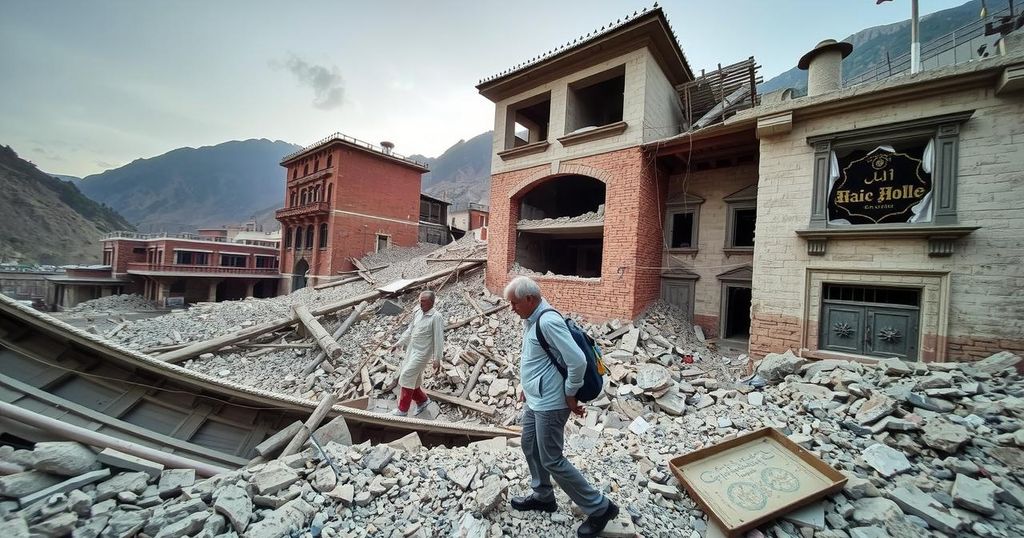Tibet Struck by Devastating 7.1-Magnitude Earthquake, Casualties Rise
A 7.1-magnitude earthquake struck Tibet and neighboring areas, resulting in at least 126 deaths and hundreds of injuries. The disaster caused substantial infrastructure damage, prompting rescue efforts amid numerous aftershocks and severe conditions. The government has committed resources to assist those affected and mitigate further risks in this high-altitude region.
A powerful earthquake struck a remote region in western China and parts of Nepal on Tuesday, registering a magnitude of 7.1 on the Richter scale. The seismic event occurred in Tibet, resulting in at least 126 fatalities and over 188 injuries, as reported by the official Xinhua news agency. Hundreds of homes suffered significant damage, with debris littering streets and obstructing rescue efforts as aftershocks continued to affect the area. Rescue teams, facing challenging conditions, have been actively searching for survivors amidst the rubble of collapsed structures.
The devastation was widespread, with state broadcaster CCTV reporting damage to more than 1,000 homes in the sparsely populated region. Although residents in northeastern Nepal felt the earthquake, initial assessments did not indicate significant injuries or structural damage. The earthquake was particularly alarming due to its shallow depth of approximately 10 kilometers, which exacerbated the potential for destruction.
The epicenter of this seismic activity was identified as Tingri County in Tibet, a region prone to earthquakes due to the colliding Indian and Eurasian tectonic plates. In the immediate aftermath, approximately 150 aftershocks were recorded, prompting the closure of the popular Mount Everest area on the Chinese side. Chinese authorities have mobilized a robust rescue operation, deploying over 3,000 personnel to aid in recovery efforts and pledging substantial financial assistance for disaster relief.
This earthquake, occurring in a high-altitude region prone to seismic activities, underscores the geological volatility of Tibet, where the convergence of tectonic plates leads to significant geological events. The region has historically faced similar natural disasters, and this latest tremor illustrates the ongoing vulnerabilities faced by its inhabitants. The response from Chinese officials, including deployment of rescue teams and financial assistance, highlights the urgency of addressing the immediate humanitarian needs and infrastructure damage resulting from such disasters.
In summary, the recent 7.1-magnitude earthquake in Tibet has left a devastating toll, with numerous fatalities and extensive damage to property. The swift response from the Chinese government reflects the critical need for effective disaster management in such high-risk areas. Continuous aftershocks and ongoing rescue operations signify the tragic yet resilient spirit of the affected communities, who face the long journey toward recovery amidst the challenges posed by their geographical location.
Original Source: www.marca.com




Post Comment